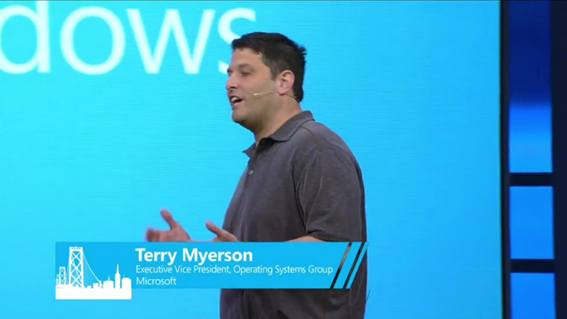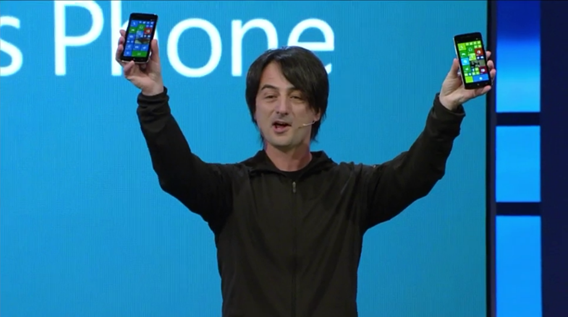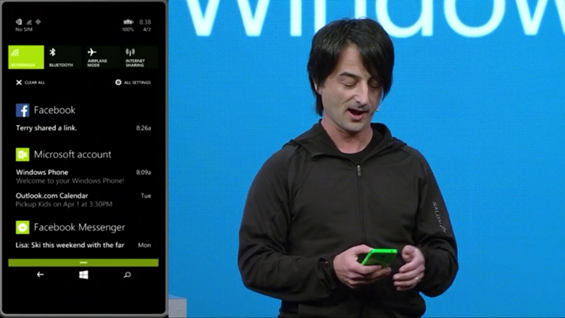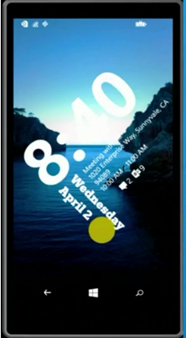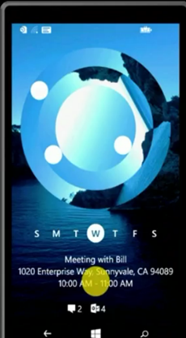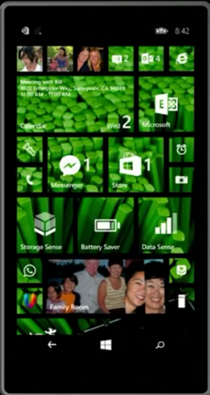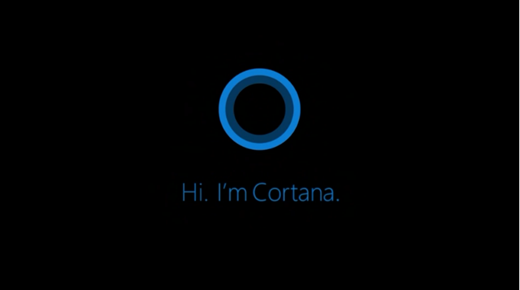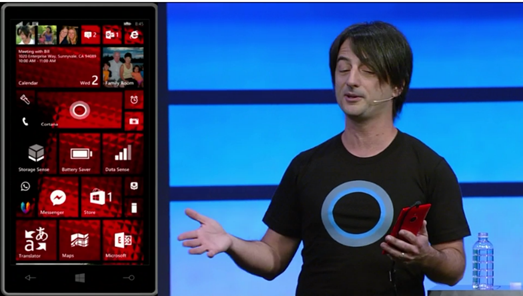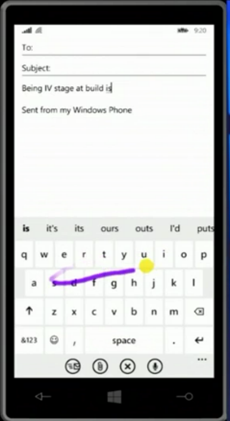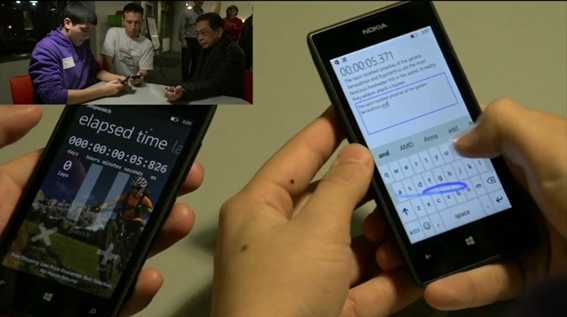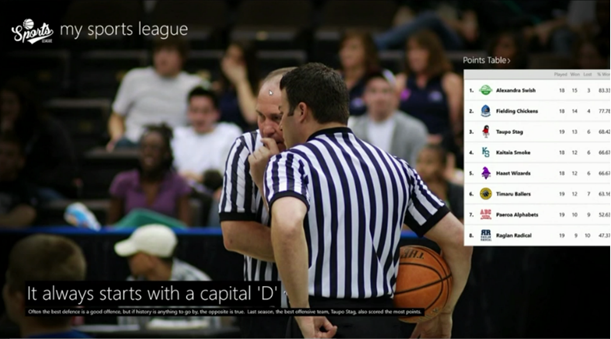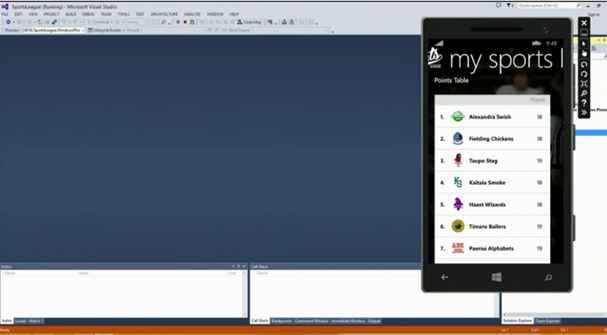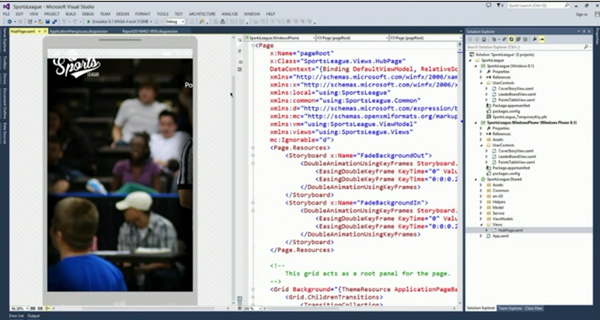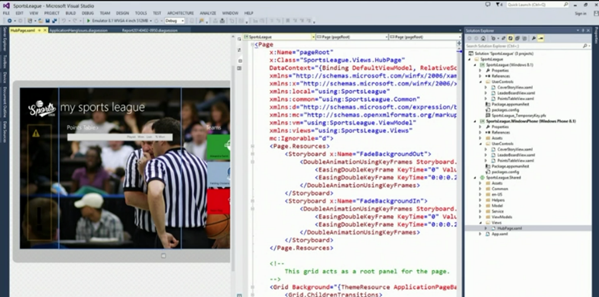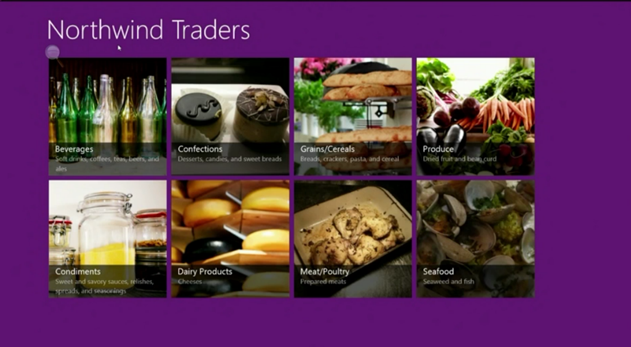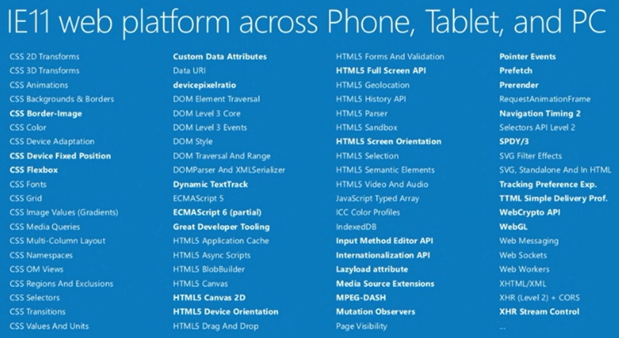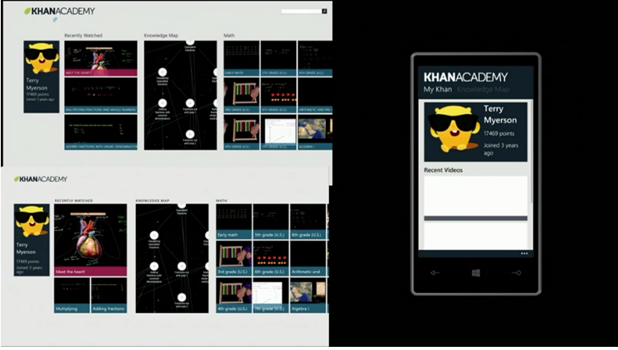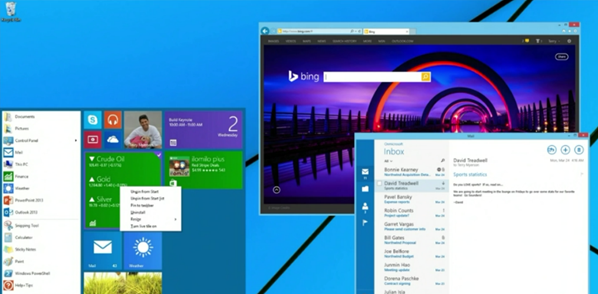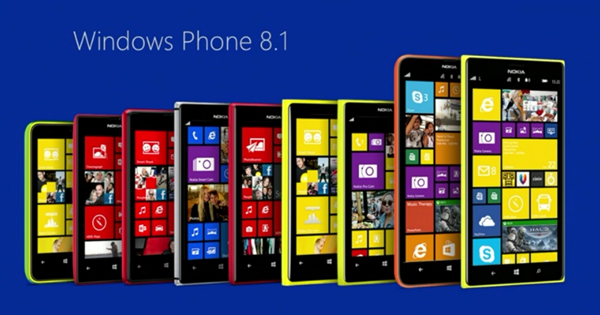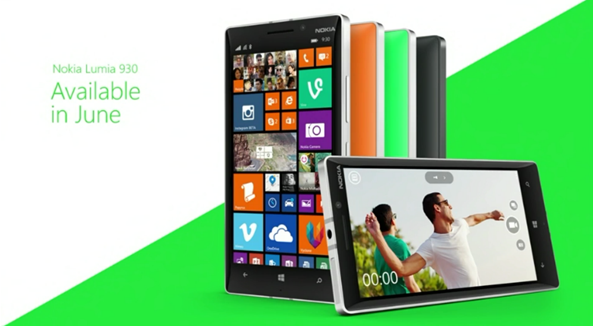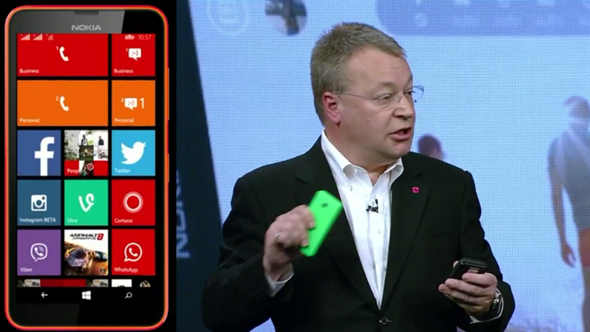BUILD: Day 1 Keynote Summary
Coffee in hand, cool air and a zeal in my step, I made my way to BUILD this morning, and now here we are. In San Francisco, at the Moscone Center, at BUILD. It’s Day 1, and the energy is palpable. I’m even a bit nostalgic seeing old friends and colleagues in the Convention Center hallways and thinking about the new friends I’ll make this week. But now it’s time for the keynote to begin…so let’s sit back and let the show begin!
Terry Myerson opened the keynote with emphasizing that Microsoft is about developers and all about “making your creativity come to life.” He emphasized that using public translation APIs, all that will be presented across the world to a multitude of audiences and in a number of languages. Through a great opening video, it noted that “1.5 Billion people use Windows every day!”
Joe Belfiore then took the stage and stated that there are two key announcements that will happen today: Windows Phone 8.1 and Update for Windows 8.1. He also showed a couple of new phones: MicroMax and Prestigio.
Joe stated that Windows Phone 8.1 is about “better expressing your personality and making you more efficient and productive.” He also showed a few demos including the new “Action Center”
He also showed some new features around the “Lock screen” that come with a set of APIs developers can use to exert deeper levels of control over the lock screen. He showed a number of interesting ways to change the lock screen such as vertically positioned images, specific themes, and so on.
He also discussed how to customize the Start Screen, to more fully customize your own phone experience. Below you can see the Start Screen customized with your own image.
He also introduced “Cortana,” which is the personal digital assistant for Windows Phone 8.1. Cortana is powered by Bing, thus “absorbs” the Internet and is able to personalize the phone experience specifically for you. Cortana augments the search function on your phone.
Joe walked through a number of things that Cortana can do such as scheduling appointments, learning, do searches, understand the places you frequent, tracks your interests, setting alarms, understanding personal and business calendars, etc. Cortana can also be extended through 3rd party apps.
The interesting thing about Cortana is that “she” learns about you the more you use your phone—the ultimate in personalization. One core feature of Cortana is a notebook that the assistant uses to manage information, suggestions, and other data about you. Joe walked through a number of demo scenarios from booking restaurant reservations, checking out sports scores, making personal appointments (and resolving conflicts across personal and business appointments), helping with dietary choices, etc. All of these demos were enabled through speech technology—i.e. Joe asking Cortana questions and interacting with the personal assistant in a speech-enabled way. He also showed textual interaction as well. Very cool stuff!
Joe also brought Nick Heddermen on stage to discuss Windows Phone in the context of business. Nick walked through a number of business scenarios using the phone. For example, he demoed “enterprise VPN” connectivity on the phone—so you’re able to connect to “behind-the-firewall” resources directly from your phone in a secure way! He also showed SMIME on the phone to digitally sign mail. He also showed how you can disable specific apps and information from being saved to the phone to optimize use and security on the phone.
Joe then walked through a range of features on Windows Phone 8.1, which are listed as following:
- Enhancements to the App Store experience; that is, making it easier for you to find the app that you need and providing personalized suggestions for users that include quick links.
- New Calendar, which makes swiping/navigating views easier, quick-view on weather, “at-a-glance” views of your week, all using a public API so all 3rd party developers can easily implement and update in similar ways.
- New Sense app for Wi-Fi (called Wi-Fi Sense), which helps you take advantage of Wi-Fi resources and automatically sign you into Wi-Fi without the need for user intervention. This is both for public networks and for home networks—where you can share your home network securely without giving access to all of your home network through giving out you password.
- Elevated Communications, where you can move from a normal phone call to a Skype call.
- Enhancements to Word-Flow Keyboard, which makes typing much easier and quicker.
The enhancements to Word-Flow keyboard are record-breaking…literally!
Joe then switched to discuss Windows 8.1,and he demoed a few things:
- Boot to resume straight to desktop.
- Shared “interests” across Bing and Cortana on Windows 8.1.
- Enteprise-mode in IE 11, to show legacy compatibility and right-rendering with older web sites and apps.
- Windows taskbar enhancements to work with Windows Store apps along with some UI enhancements for Windows Store apps (e.g. minimize functionality).
- Number of other tiles and features added to the Start Screen to enable quick launch of Control Panel/Settings, Off, etc., and also the ability to manage your Start Screen view and move/resize tiles.
- Store will also become more mouse and keyboard friendly.
- Finding an app easier through search from the Start Screen, and new apps are now highlighted upon installation.
David Treadwell then came out to discuss the developer story. He focused on three areas:
- Accessing across PC, Phone and Browser.
- Investments in your apps and code
- Cross-platform capabilities
David introduced Universal Windows Apps, which brings the Windows run-time to the phone. This is huge because it enables you to design and build apps that projects across all form factors. As a developer, you do this in a common and predictable way—through the framework that you’ve come to understand, the tools you use on top of the Windows Runtime.
Kevin Gallo then showed an update to Visual Studio 2013 that enables you to build Windows Universal Apps, which introduces a number of templates and a “shared project” artifact that enables you, for example, to move Windows 8.1 apps to Windows Universal Apps. Kevin migrated a Sports-themed Windows 8.1 app to the Universal App and then opened this in the Windows Phone emulator. Below you can see the original app and then the “migrated” app in the emulator.
Kevin also showed a number of enhancements through Visual Studio such as logging, auditing the performance of the app, etc. Real nice debugging and diagnosing capabilities! He also showed how you can swap the views to see how XAML looks different on different form factors—as shown in the screenshots below.
David then discussed how you can leverage the Universal apps once across multiple devices from the Store, so you have a more consistent app experience through submission, purchase and identity.
Kirk Koenigsbauer then came out to demo some of the advancements in Office within the context of “Universal Windows.” He discussed a number of areas including:
- Connecting the services experiences of O365 with native Office.
- Maintaining and supporting the productivity experience when moving from Win32 to the Windows 8.1 platform.
- Highlighted performance, fidelity of graphics and editing, and showcased the touch experience using galleries for formatting.
- Unlimited “Un-do” and direct save to OneDrive.
- Presentation mode in Windows, inclusive of “pinch and zoon” and editing and mark-up during presentation mode.
David then came back and discussed the “continuum” to ensure developers have maximum choice across the Windows platform and device ecosystem. A nice demo here was showing how you could then leverage older, legacy code and with some UI updates and wrapper code could re-purpose legacy database access layers from older Win32 to Windows 8.1. The screenshot of the app is below.
David then discussed the power of the web on all devices through HTML5 and IE 11. He mentioned a number of areas of support, including 3 key call-outs:
- Web GL
- Cutting Edge Video Playback
- Great Developer Tooling
The following slide shows a number of IE11 web platform enhancements (in bold):
Terry then came back out to discuss “roadmap areas” to close out the last hour of the keynote, and discussed a few things that are coming:
- Windows Universal Apps will work on XBox. Here you can see the Universal Windows App running on Windows 8.1, Xbox and Windows Phone 8.1.
- Bringing Kinect to Windows, where he showed a few examples of how Kinect is being used on Windows.
- Graphics on XBox, and then integrating DirectX graphics capability across platform through DirectX 12. This brings the high-quality graphics native to XBox to the PC/Tablet/Phone experience.
- Internet of Things, where he discussed small-scale chips that run “full” versions of Windows and showed a “device” that was connected to the cloud that collected and displayed data.
- Start menu will be enriched in a forthcoming Windows 8.1 update.
- When the new Windows Internet of Things is available, it will be free. With Phones and Tablets, this new version of Windows will be free now.
Everybody at BUILD gets a new XBox One and a $500 gift-card to buy a new device at the MSFT store. Nice!!!
Terry then handed the stage over to Stephen Elop, who discussed the integration of the Nokia family with Microsoft. Here’s a line-up. (I have a 1520 and love it.)
Stephen walked through a couple of things:
- Nokia devices (and 1520 in particular) will come in more colors.
- Release of the Nokia 930, with wireless charging, high “megapixelation” images/videos, 4 high-performance digital microphones for incredible cinematic experiences, improved filters, living images through the Storyteller app, etc.
- Introduced the Lumia 630 and 635 (as a lower-priced option), including dual-sim and 3G. Note the image below shows the tiles at the top shown in two different colors, representing the different sims. Designed for hyper-social and gaming enthusiasts even at the more affordable price. First devices that will sell Windows 8.1, with hundreds of operators supporting this device.
- Discussed “SensorCore” where your device can act in much the same way other fitness devices act, so you get the data feed (e.g. your steps) along with the apps that you can use to analyze the data. This works hand-in-glove with the Bing Health app.
- New imaging SDK 1.2 and SensorCore SDK
Satya Nadella closed the Day 1 keynote out by doing a wrap of the keynote topics and then taking some pre-recorded questions. He provided some great answers across a number of areas, in some cases reflecting on what the keynote speakers had discussed and in others introducing areas such as compete, natural user interface, natural language, Microsoft’s focus on tooling and Cloud evolution, improved consistency across APIs, cross-platform support, and of course the improvements in Windows across the board. Overall, a great close-out with the inclusion of various, and different, voices from the developer community.
All in all, a great Day 1 Keynote!
Summary of Key Announcements
A round-up of some of the key announcements I heard today were as follows:
- Windows Phone 8.1 (will start to ship late April)
- Update for Windows 8.1 (coming April 8th or today on MSDN)
- “Cortana” Personal Assistant (Beta)
- Windows Universal Apps
- WinJS as an Open Source project (available today)
- VS 2013 Update 2RC (available today)
- Windows Universal Apps running on XBox
- Kinect V2 for Windows
- “Internet of Things” version of Windows
- Nokia 930 (selling globally starting in June)
- Imaging SDK 1.2 and SensorCore SDK
Well, that’s it for the Day 1 keynote. And wow, there was a lot of stuff happening and some great giveaways today at BUILD!
I’ll continue to blog on the sessions tomorrow’s keynote and throughout the week as interesting information and learnings arise throughout the week.
Cheers,
Steve

